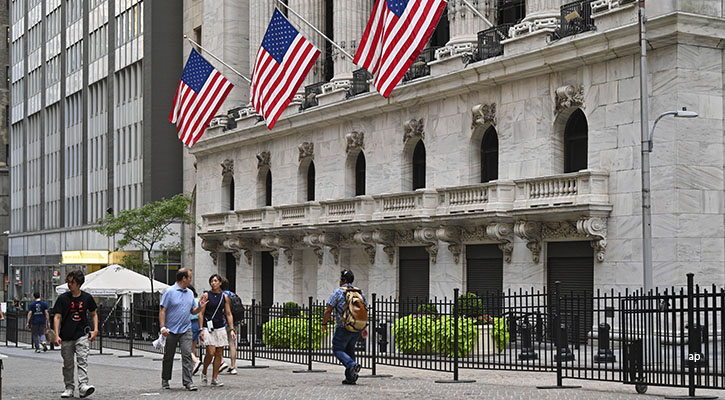
Best Fixed-Income Fund House -- PIMCO Asia Limited
M: Morningstar P: Fund Management Team
M: What is your outlook for 2017 specific to the markets you cover, and how are you positioned to take advantage of opportunities and/or mitigate potential risks?
P: We remain modestly overweight to overall risk positioning, maintaining ample dry power and remain focused on portfolio liquidity and tail risk hedging strategies
While we are more constructive on equities relative to other risk assets, we are maintaining a neutral view overall and an underweight to U.S. equities. We are moderately bullish on European equities, and currently have a small positive allocation to EM as a long-term play
We remain defensive on interest rates exposure. In the U.S., we prefer Treasury Inflation-Linked Protected Securities (TIPS). Beyond the U.S., we find UK Gilts and Japanese government bonds rich, and we believe valuations of bonds by “peripheral” countries in Europe are not sustainable without ECB support
Our overweight to credit is focused on non-agency mortgage-backed securities, which will likely continue to benefit from an ongoing recovery in the U.S. housing market and remain well-insulated from many global risks
We maintain an overweight to real assets, with a focus on U.S. TIPS
We continue to favor the U.S. dollar against a basket of Asian currencies, and also have a modest underweight in the euro. We are holding small tactical positions in some of the higher-carry “commodity currencies” given the excessive cheapening seen post elections.
M: Can you comment on the macro risks in the global economy, such as the change in leadership in the US, and the significant headwinds faced by emerging markets? How do these risks affect your investment decisions?
P: We expect a highly uncertain investment environment in 2017 amid a backdrop of four important transitions already underway:
- Handoff from monetary-led to fiscal-led policy
- Transition from globalization to de-globalization
- China’s currency regime shift
- Pivot from disinflation to reflation
Uncertainty surrounding these major transitions means that the likelihood of extreme events or tail risks is much greater in 2017. This is true for both downside (left tail) and upside (right tail) risks. When considering the potential outcomes from Trump administration policies, on one hand, deregulation coupled with tax reform could unleash a burst of productivity-boosting investment that may lead to sustained higher growth rates and corporate profits. On the other hand, trade wars, tariffs and geopolitical conflicts could depress growth and even tip the economy into a recession. In addition, as our analysis shows, starting valuations in both stock and bond markets don’t promise attractive future returns. All of this calls for a careful and nuanced approach to asset allocation.
While EM valuations are still quite attractive (although not as much as in early 2016), we see some headwinds from a stronger U.S. dollar, future Fed hikes and potential changes in U.S. trade policy. Moreover, EM equity valuations have outperformed historic correlations to commodity prices. Therefore, we advocate being more targeted and selective in EM exposure this year.
In 2017 and beyond, we believe investors will need to do more than simply rely on passive market exposures. The trend that had benefitted passive investments in both equities and bonds for the past several years – market valuations being dominated by one single factor, i.e., central bank liquidity and the ensuing move to lower long-term rates – is now largely behind us. We face a future where position on the business cycle, trends in earnings growth, as well as fiscal, tax, and trade policies could favor certain regions, industries and sectors over others. This should lead to – and has already – greater dispersion and less predictable correlations, making passive investing risky. We suggest investors to focus on detailed economic analysis and bottom-up security and sector selection, combined with careful risk management and downside protection. Overall, the environment ahead is likely to present active managers with a plethora of opportunities to add value.
M: What do you think are the success factors in your corporate culture than enables your firm to consistently deliver for investors?
P: PIMCO combines topflight talent, cutting edge technology and a long-term investment approach, to enable its 2,200 employees around the globe to provide clients with consistently superior returns and client service that is second to none. We are focused on partnering with clients to create investment solutions that fit their unique needs, and dedicates a team of investment professionals to client servicing, allowing portfolio managers to focus on managing client assets. Our flat management structure allows PIMCO to focus on client needs and respond quickly to an ever-changing external environment. Our global process enables the firm to identify and implement innovative products that consistently outperform the benchmark.
Throughout our 45-year history, PIMCO has had a forward-thinking culture that helps clients stay ahead of developments that shape the investment landscape. To name a few examples, PIMCO:
- began using mortgage-backed securities in client portfolios since 1975, making us one of the earliest investors in the sector
- introduced the groundbreaking portable alpha strategies in 1986 that pair equity index futures with actively managed bond portfolios
- launched the first Treasury Inflation-Linked Securities (TIPS) focused mutual fund on the same day as the first TIPS auction in 1997
- predicted “housing will be the next Nasdaq bubble” in 2006 and steered portfolios away from subprime mortgage debt ahead of the 2007-2008 financial crisis
PIMCO remains at the forefront today, pioneering the use of innovative solutions for clients across different asset classes, including absolute return, asset allocation, and portable alpha strategies.
PIMCO’s commitment to inclusion and diversity is another key factor to the firm’s success. As a global firm entrusted with managing client assets around the world, we believe having colleagues from diverse backgrounds generates better ideas and attitudes, a greater understanding of cultural differences, and therefore, smarter business decisions. It makes the firm’s culture stronger and more reflective of the complex and diverse world in which we operate, better positioning us to succeed regardless of the environment in which we operate.
M: Can you share some of your future business plans with us, such as the launch of new products? Are there plans to further strengthen your investment team? In which areas?
P: PIMCO evalutes resource needs on an ongoing basis and focuses on consistently reinvesting in all areas of the firm to the benefit of clients. The firm is constantly looking to attract top talent across every functional area of the business in order to allow the firm to continue providing superior investment management and servicing to its clients. The firm is also invested in continually enhancing systems in an effort to provide high-quality risk management and analytics that are critical to managing risk and delivering returns.
PIMCO will always actively seek opportunities to add value for our clients and will invest resources as appropriate to support that goal.
View all Morningstar Hong Kong Fund Awards 2017 articles here.

















